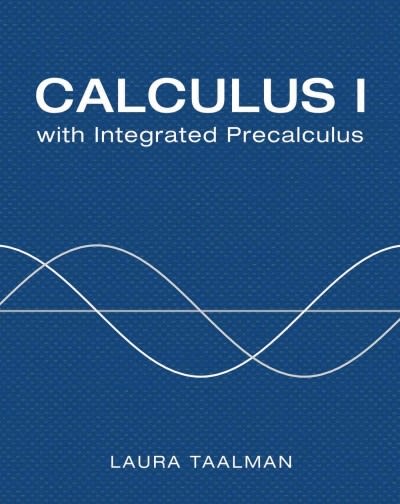Question
1.How many possible outcomes are there if we toss10dice, each of a different color? N =possible outcomes 2.You play two unrelated games, one after the
1.How many possible outcomes are there if we toss10dice, each of a different color?
N=possible outcomes
2.You play two unrelated games, one after the other. There is a35% chance of winning the first game, and there is a60% chance of winning the second game. Use the product formula for independent events to find the probability that you win both games.
P=%
3.I am voting in a state election. There arethreecandidates for governor, four candidates for lieutenant governor, three candidates for the state house of representatives, and four candidates for the senate. In how many different ways can I fill out a ballot if I vote once for each office?
4.Assume that a box containsfourred jelly beans and two green ones. We consider the event that a red bean is drawn.
Suppose I pick a jelly bean from the box without looking. I record the color and put the bean back in the box. Then I choose a bean again. Are the two events independent?
independent
not independent
What is the probability of getting a red bean both times? (Enter your probability as a fraction.)
5Assume that a box containsfourred jelly beans and two green ones. We consider the event that a red bean is drawn.
Suppose I pick a jelly bean from the box without looking, and I do not put the bean back in the box. Then I choose a bean again. Are the two events independent?
independent
not independent
What is the probability of getting two red beans? (Enter your probability as a fraction.)
6.Suppose an opaque jar contains4red marbles and 10 green marbles. The following exercise refers to the experiment of picking two marbles from the jar without replacing the first one.
What is the probability of getting a green marble first and a red marble second? (Enter your probability as a fraction.)
7.Suppose an opaque jar contains3red marbles and 10 green marbles. The following exercise refers to the experiment of picking two marbles from the jar without replacing the first one.
What is the probability of getting a green marble and a red marble? (Enter your probability as a fraction.Hint:How is this exercise different from finding the probability of getting a green marble first and a red marble second?)
8.The following exercise refers to choosing two cards from a thoroughly shuffled deck. Assume that the deck is shuffled after a card is returned to the deck.
If you put the first card back in the deck before you draw the next, what is the probability that the first card is a9and the second card is aace? (Enter your probability as a fraction.)
9.The following exercise refers to choosing two cards from a thoroughly shuffled deck. Assume that the deck is shuffled after a card is returned to the deck.
If you do not put the first card back in the deck before you draw the next, what is the probability that the first card is a5and the second card is ajack? (Enter your probability as a fraction.)
10.The following exercise refers to choosing two cards from a thoroughly shuffled deck. Assume that the deck is shuffled after a card is returned to the deck.
If you put the first card back in the deck before you draw the next, what is the probability that the first card is acluband the second card is adiamond? (Enter your probability as a fraction.)
Step by Step Solution
There are 3 Steps involved in it
Step: 1

Get Instant Access to Expert-Tailored Solutions
See step-by-step solutions with expert insights and AI powered tools for academic success
Step: 2

Step: 3

Ace Your Homework with AI
Get the answers you need in no time with our AI-driven, step-by-step assistance
Get Started


